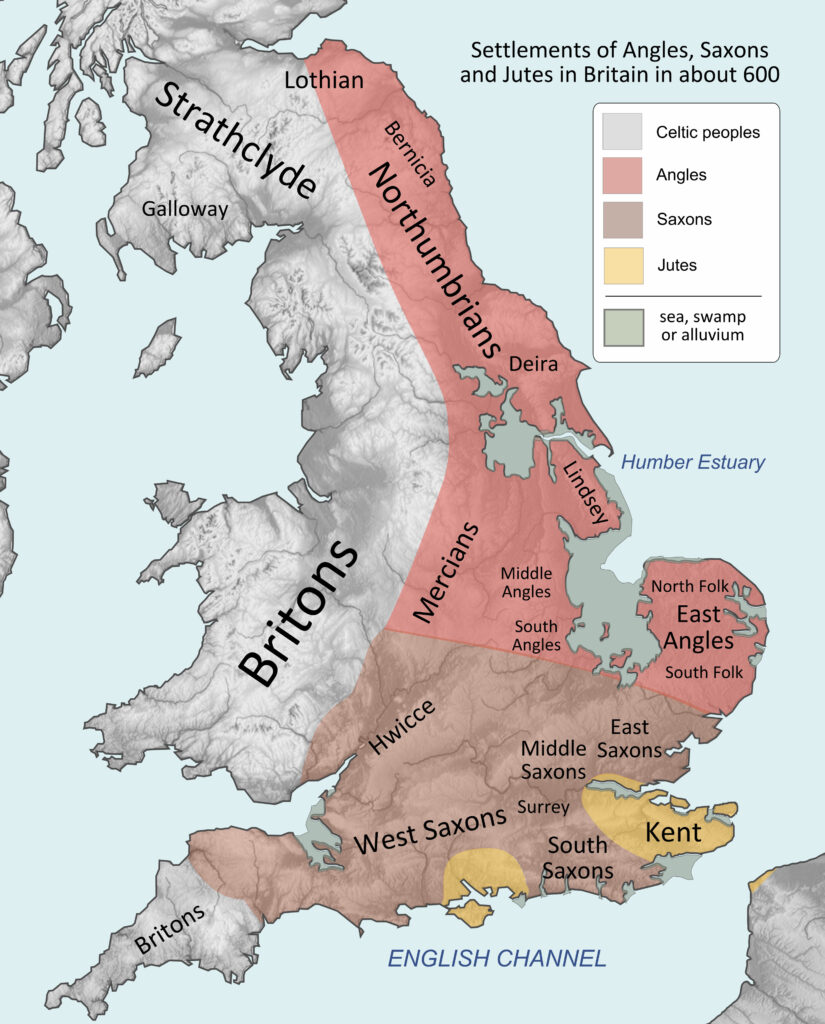England before England

The world of 7th-century Britain was…different. Looking back to it now, we are faced with barriers of language, culture, religion. Everything was different. If a time machine were to transport us back to the 7th century, we would find ourselves in a strange landscape.
Although not something we could see when we emerge, blinking, from our time machine, perhaps the most unexpected difference is the shape of the country. The map of Britain is something we’re as familiar with as our own neighbourhoods. But even the shape of the country, particularly in its low lying eastern half, was different. Then, the sea took deep bites into the land: what is today Lincolnshire was almost an island, its boundaries as fluid as the tidal marshes that surrounded it. The Humber flowed through a markedly broader estuary and then spread, north and south, creating a vast marshland south of York. The Wash washed inland to take up almost all of present-day Cambridgeshire. The River Thames was not constrained, as it is today, behind concrete embankments but breathed in and out on every tide, sending its turbid water through deep channels into Southwark and up the now hidden rivers and streams that fed it. The Kentish spur that ends at the shingle beach of Dungeness was salt marsh too, with boats able to navigate up stream along the River Rother as far as Bodiam Castle, built in 1385 to guard against French invaders sailing up stream and landing there. At the eastern extremity of Kent, forming the hinge upon which so much of our history has turned, the Isle of Thanet really was an island, separated from the mainland by the Wantsum Channel, a safe anchorage where many a boat moored before attempting the passage along the north coast of Kent and into the treacherous tidal waters of the Thames estuary.
These tidal estuaries, salt marshes and broad rivers made the eastern coast of England markedly different from today. In the west, only the Somerset levels interrupt a generally familiar coast line, taking a big bite out of their eponymous county and providing, two hundred and fifty years later a refuge for a later Anglo-Saxon king.
0 Comments